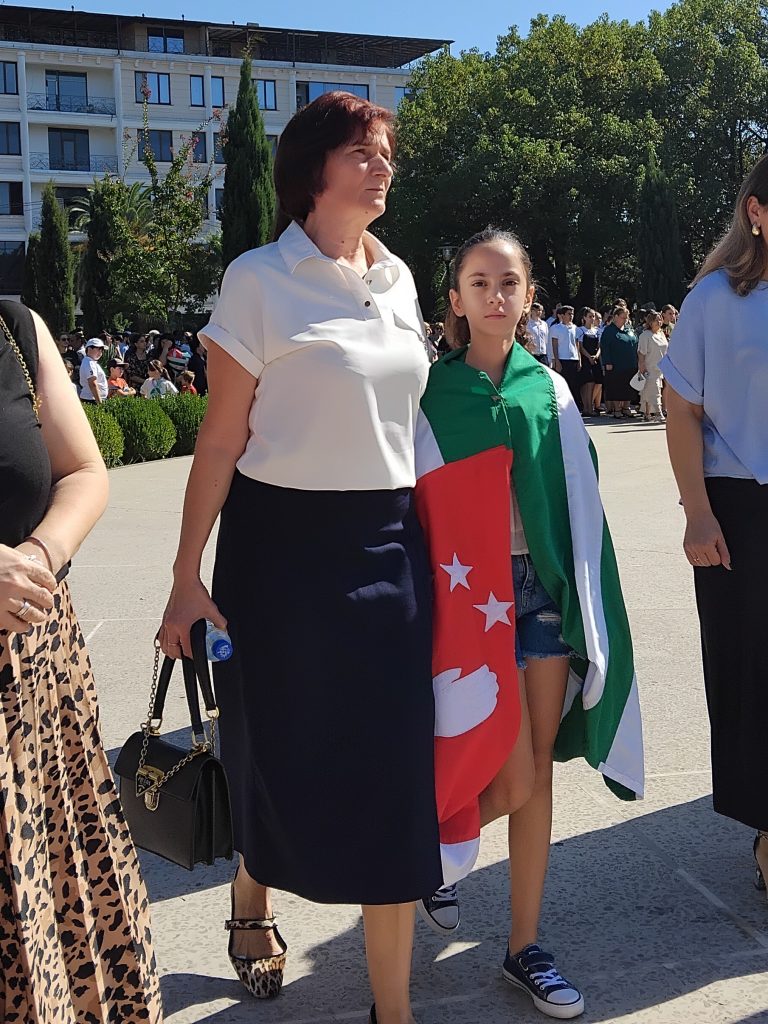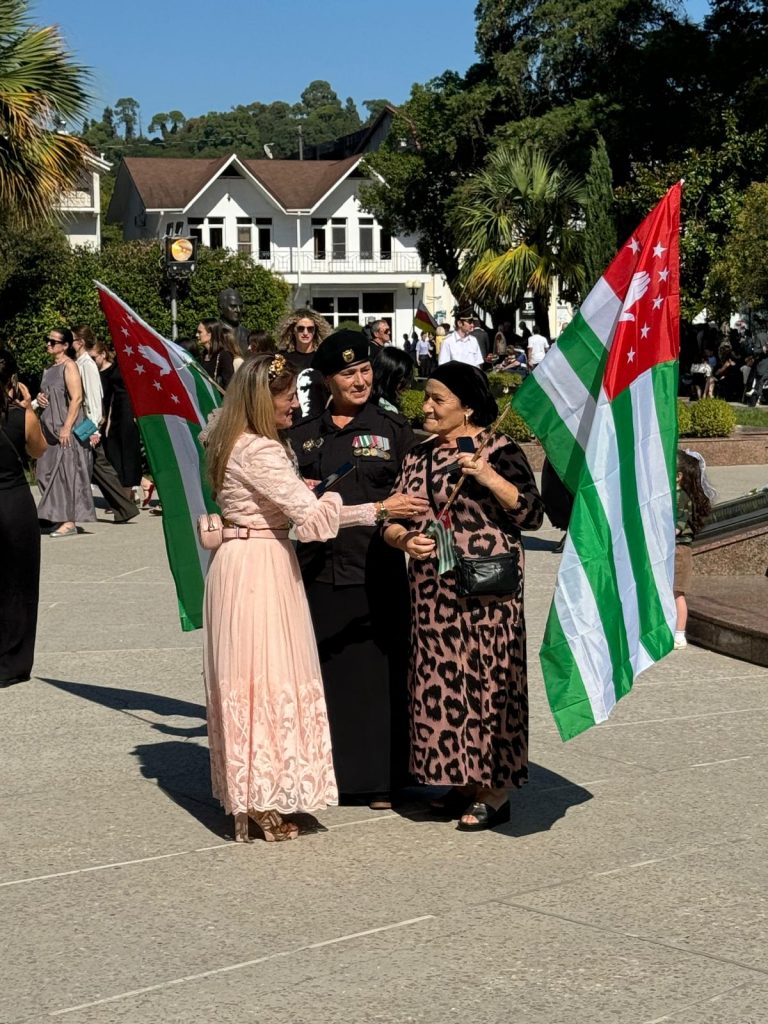The flag of Abkhazia, formally known as the Republic of Abkhazia, is a disputed region in the South Caucasus. The Abkhazian flag is one of the most distinctive of the small number of partially recognised countries in the world. Its unique design reflects the region’s rich cultural heritage and complex relations with Georgia.
Abkhazia is similar to South Ossetia, Transnistria and Nagorno-Karabakh (Ceased to exist 1st January 2024), as these are unrecognised or partially recognised countries which are frozen conflict zones that struggle to be recognised by the international community.
Abkhazia and South Ossetia are recognised by five United Nations members, Russia, Venezuela, Nicaragua, Nauru and Syria, while Transnistria is not recognised by any.
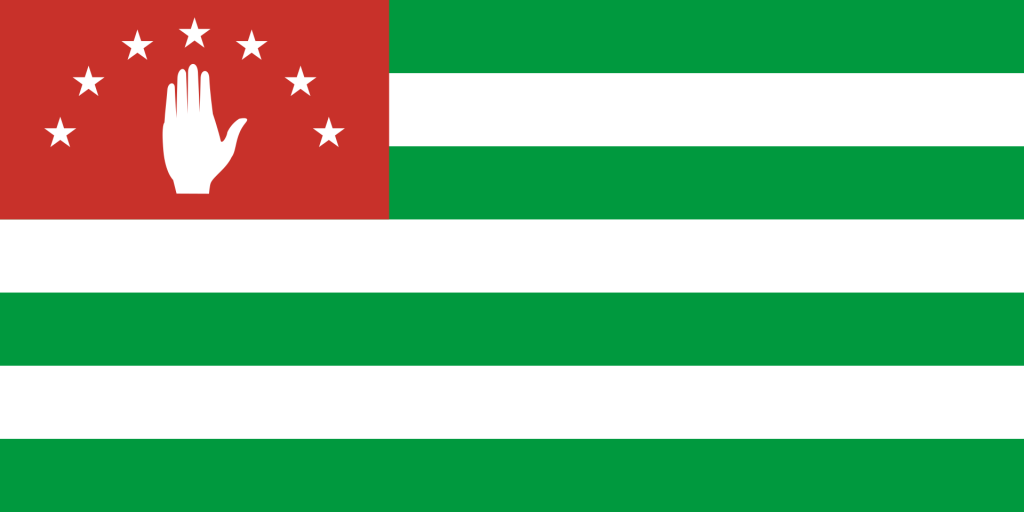
The Design and Meaning of the Abkhazian Flag
Abkhazia’s flag has seven horizontal stripes, alternating in green and white. There are four green stripes and three white stripes. The green and white stripes symbolise tolerance and the desire for the peaceful coexistence of different religions and other ethnic groups within the region. The green represents Islam, and white represents Christianity, the common religion in Abkhazia. The green also represents the natural beauty of Abkhazia’s lush landscapes.
The upper left corner (canton) has a red rectangle with a right hand and the palm facing outward in the center. The hand is an ancient Abkhazian symbol that signifies peace, purity, and openness. It also represents the willingness to engage with other nations. The red represents the strength, resilience, and sacrifice of the blood shed for Abkhazia’s historical struggle for self-determination.
Above the hand are seven white stars arranged in an arc. These represent the seven historical regions of Abkhazia: Sadzen, Bzyp, Guma, Abzhwa, Samurzakan, Dal-Tsabal, and Pskhu-Aibga.
History of the Flag of Abkhazia
The flag of Abkhazia was officially adopted on July 23rd, 1992. The Abkhazian flag reflects the country’s culture, history, and aspirations for peace and unity. It was vital for Abkhazia to have a flag after it declared independence from Georgia, although the international community considers it the sovereign territory of Georgia.
Inspired by the flag of the Republic of the Northern Caucasus, Valery Gamgia, a local artist designed the current Abkhazian flag. Approved by the Supreme Council of Abkhazia, the task of sewing the flags was carried out in secret by Arda Arshania–Ardzinba, a skilled textile factory worker, in her home. Secrecy was vital as many of her textile colleagues were Georgians who opposed a national symbol for Abkhazia and its people. This mammoth task was completed under constant threat before being unveiled.
Click here to read more the history of the Abkhazian flag.
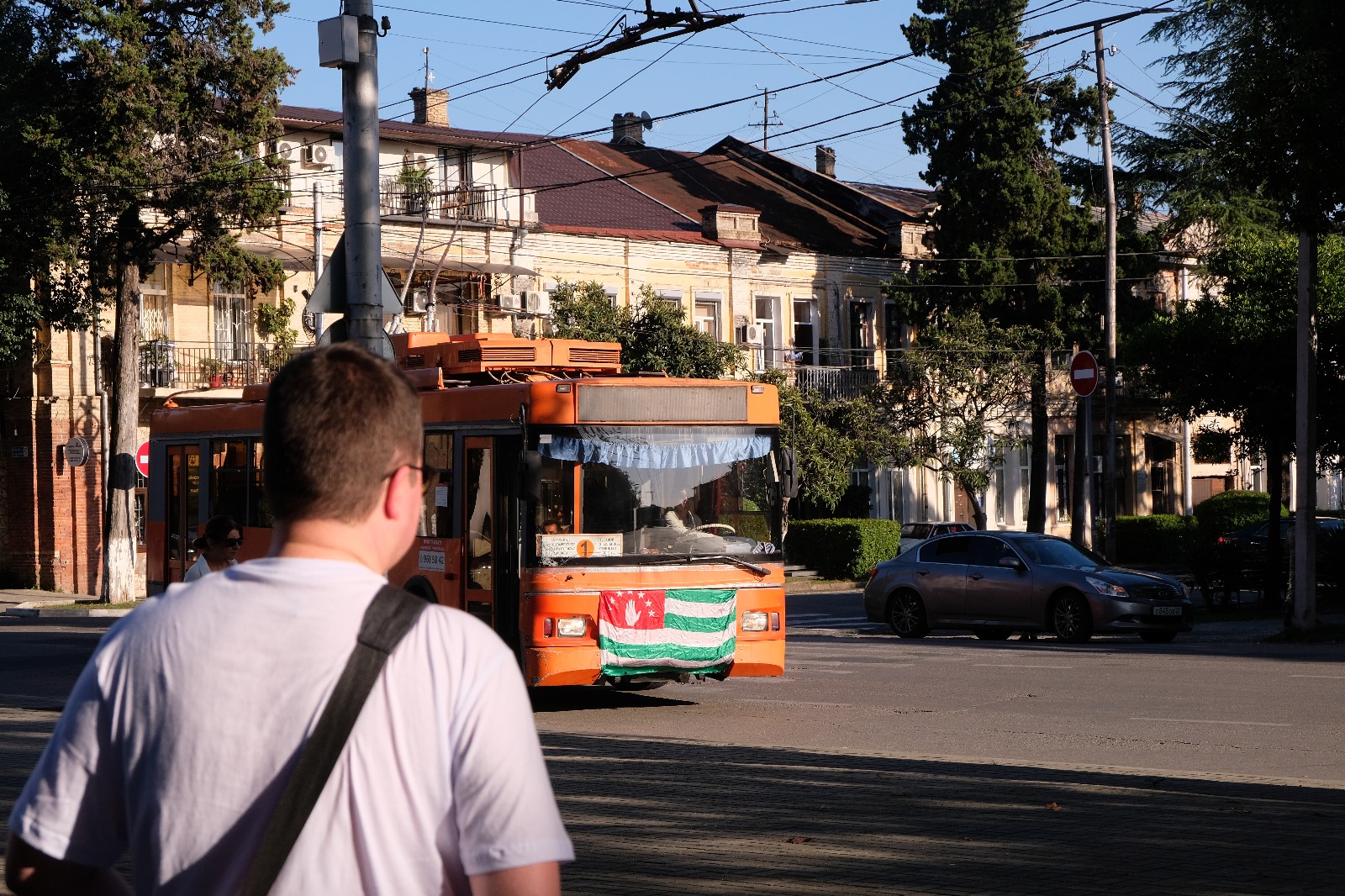
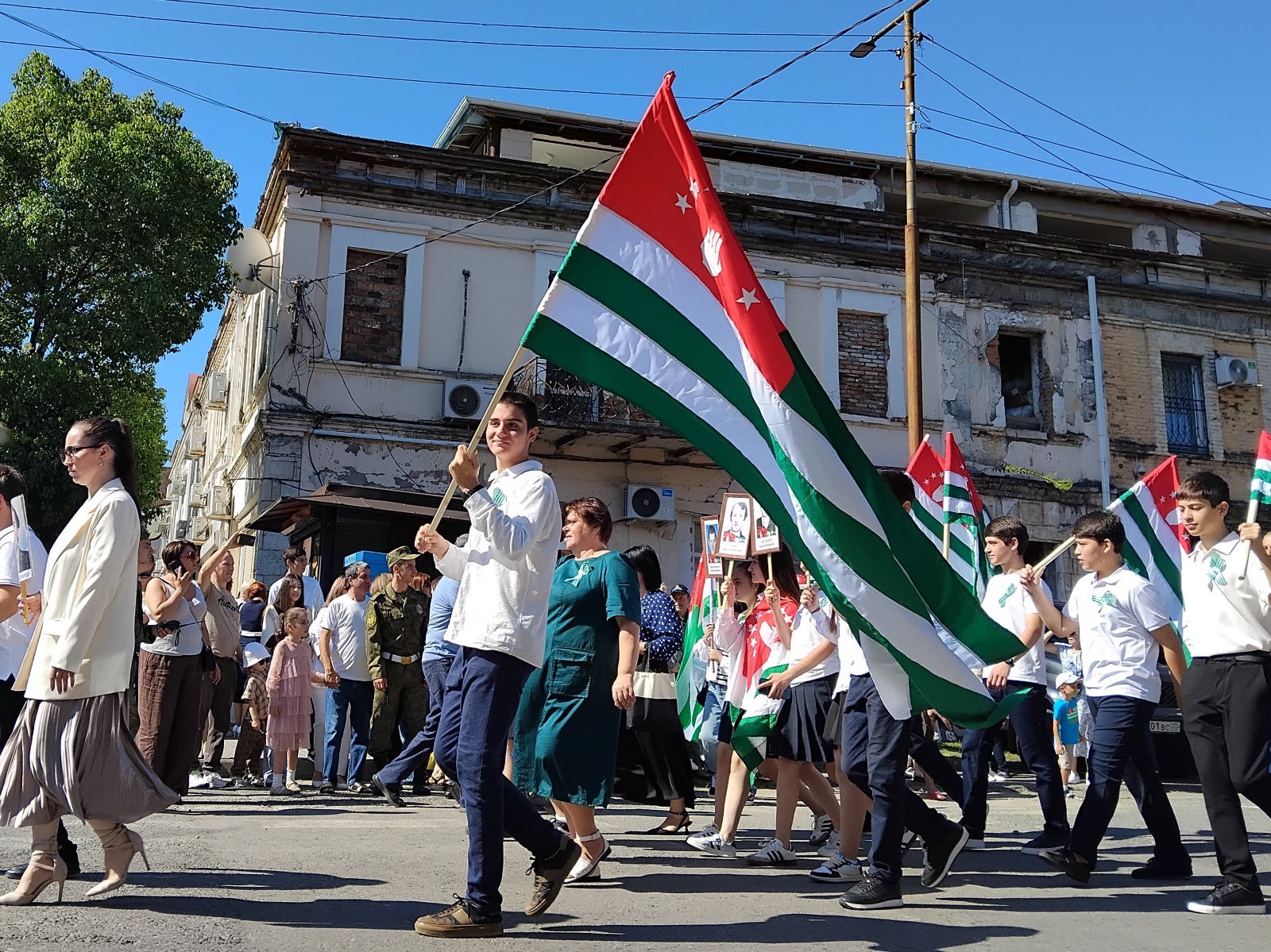
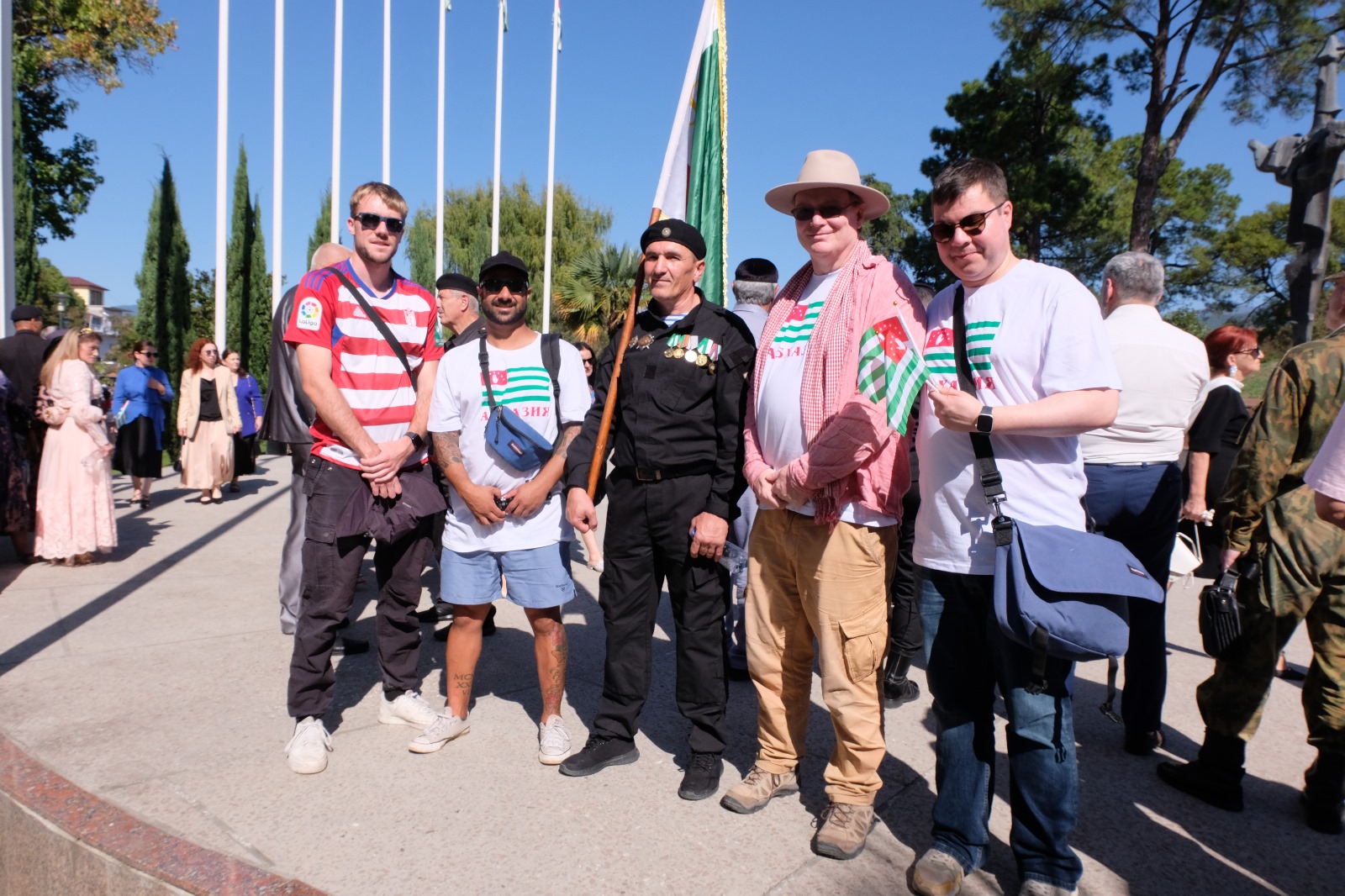
Georgian-Abkhaz War, Abkhazian Flag Significance
Tensions between ethnic Abkhazians and Georgians were already high even before the dissolution of the Soviet Union. On the 14th of August 1992, a mere three weeks after Abkhazia’s approval of the state flag, Georgian troops entered Abkhazia to secure strategic transport routes.
However, this quickly escalated with Abkhazians and volunteers from the North Caucasus including Chechens, Ossetians and Cossacks who fought back against the Georgians. The Abkhazian flag became symbolic of independence and resistance. Although resulting in victory for Abkhazia, many in the international community see the de facto state as part of Georgia.
How is the Flag of Abkhazia Seen Today?
Today, the Abkhazian flag is a symbol of its proud identity, celebrated during their Independence Day on the 30th of September. For the citizens, the flag of Abkhazia signifies unity, resilience, and the enduring hope for full international recognition.
The Abkhazian flag is displayed openly and freely throughout the country, particularly in Sukhum (Sukhum is the Abkhazian name and Sukhumi is the Georgian), the capital city signifying the Abkhazian people’s pride, unique cultural identity, and complex historical journey.
Although the flag of Abkhazia represents aspirations and the desire for harmonious coexistence with its geographical neighbours, it still remains politically sensitive to Georgia.
Join us for the National Day celebrations, Abkhazia most celebrated event of the year! See all our other Soviet Europe tours including Transnistria and South Ossetia! Learn more about the flags of the Caucasus region.
